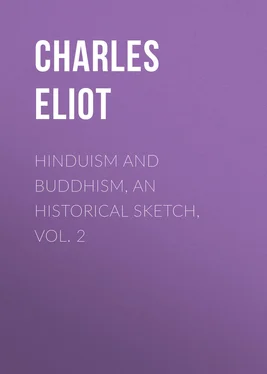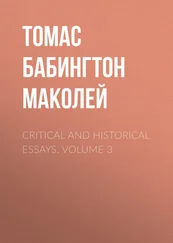Charles Eliot - Hinduism and Buddhism, An Historical Sketch, Vol. 2
Здесь есть возможность читать онлайн «Charles Eliot - Hinduism and Buddhism, An Historical Sketch, Vol. 2» — ознакомительный отрывок электронной книги совершенно бесплатно, а после прочтения отрывка купить полную версию. В некоторых случаях можно слушать аудио, скачать через торрент в формате fb2 и присутствует краткое содержание. Жанр: foreign_religion, Философия, Религиозная литература, foreign_psychology, foreign_antique, foreign_prose, на английском языке. Описание произведения, (предисловие) а так же отзывы посетителей доступны на портале библиотеки ЛибКат.
- Название:Hinduism and Buddhism, An Historical Sketch, Vol. 2
- Автор:
- Жанр:
- Год:неизвестен
- ISBN:нет данных
- Рейтинг книги:4 / 5. Голосов: 1
-
Избранное:Добавить в избранное
- Отзывы:
-
Ваша оценка:
- 80
- 1
- 2
- 3
- 4
- 5
Hinduism and Buddhism, An Historical Sketch, Vol. 2: краткое содержание, описание и аннотация
Предлагаем к чтению аннотацию, описание, краткое содержание или предисловие (зависит от того, что написал сам автор книги «Hinduism and Buddhism, An Historical Sketch, Vol. 2»). Если вы не нашли необходимую информацию о книге — напишите в комментариях, мы постараемся отыскать её.
Hinduism and Buddhism, An Historical Sketch, Vol. 2 — читать онлайн ознакомительный отрывок
Ниже представлен текст книги, разбитый по страницам. Система сохранения места последней прочитанной страницы, позволяет с удобством читать онлайн бесплатно книгу «Hinduism and Buddhism, An Historical Sketch, Vol. 2», без необходимости каждый раз заново искать на чём Вы остановились. Поставьте закладку, и сможете в любой момент перейти на страницу, на которой закончили чтение.
Интервал:
Закладка:
Our estimate of his position in the history of Buddhism must depend on our opinion as to the authorship of The Awakening of Faith . If this treatise was composed by Aśvaghosha then doctrines respecting the three bodies of Buddha, the Tathâgatagarbha and the Âlaya-vijñâna were not only known but scientifically formulated considerably before Asanga. The conclusion cannot be rejected as absurd—for Aśvaghosha might speak differently in poems and in philosophical treatises—but it is surprising, and it is probable that the treatise is not his. If so, Asanga may have been the first to elaborate systematically (though not to originate) the idea that thought is the one and only reality. Nâgârjuna's nihilism was probably the older theory. It sounds late and elaborate but still it follows easily if the dialectic of Gotama is applied uncompromisingly not only to our mental processes but to the external world. Yet even in India the result was felt to be fantastic and sophistical and it is not surprising if after the lapse of a few generations a new system of idealism became fashionable which, although none too intelligible, was abstruse rather than paradoxical.
Asanga was alleged to have received revelations from Maitreya and five of his works are attributed to this Bodhisattva who enjoyed considerable honour at this period. It may be that the veneration for the Buddha of the future, the Messiah who would reign over his saints in a pure land, owed something to Persian influence which was strong in India during the decadence of the Kushans. 223 223 Vincent Smith, l.c. p. 275.
Both Mithraism and Manichæism classified their adepts in various ranks, and the Yogâcâra doctors who delight in grading the progress of the Bodhisattva may have borrowed something from them. 224 224 But there are of course abundant Indian precedents, Brahmanical as well as Buddhist, for describing various degrees of sanctity or knowledge.
Asanga's doctrine of defilement (kleśa) and purification may also owe something to Mani, as suggested by S. Lévi.
In spite of his literary merits Asanga remains a doctor rather than a saint or poet. 225 225 The wooden statues of Asanga and Vasubandhu preserved in the Kōfukaji at Nara are masterpieces of art but can hardly claim to be other than works of imagination. They date from about 800 A.D. See for an excellent reproduction Tajima's Select Relics , II. x.
His speculations have little to do with either Gotama or Amitâbha and he was thus not in living touch with either the old or new schools. His brother Vasubandhu had perhaps a greater position. He is reckoned as the twentieth Patriarch and Tibetan tradition connects him with the worship of Amitâbha. 226 226 See Eitel and Grünwedel, but I do not know in what texts this tradition is found. It is remarkable that Paramârtha's life ( T'oung Pao , 1904, pp. 269-296) does not say either that he was twentieth patriarch or that he worshipped Amida.
Paramârtha's life of Vasubandhu represents him as having frequented the court of Vikramâditya (to be identified with Candragupta I), who at first favoured the Sânkhya philosophy but accorded some patronage to Buddhism. During this period Vasubandhu was a Sarvâstivâdin but of liberal views 227 227 On receiving a large donation he built three monasteries, one for Hinayanists, one for Mahayanists and one for nuns.
and while in this phase wrote the Abhidharma-kośa, a general exposition of the Abhidharma, mainly according to the views of the Vaibhâshikas but not without criticism. This celebrated work is not well known in Europe 228 228 The work consists of 600 verses (Kârikâ) with a lengthy prose commentary (Bhâshya) by the author. The Sanskrit original is lost but translations have been preserved in Chinese (Nanjio, Nos. 1267, 1269, 1270) and Tibetan (see Cordier, Cat. du Fonds tibétain de la Bib. Nat. 1914, pp. 394, 499). But the commentary on the Bhâshya called Abhidharma-kośa-vyâkhyâ, or Sphuṭârtha, by Yásomitra has been preserved in Sanskrit in Nepal and frequently cites the verses as well as the Bhâshya in the original Sanskrit. A number of European savants are at present occupied with this literature and Sir Denison Ross (to whom I am indebted for much information) contemplates the publication of an Uigur text of Book I found in Central Asia. At present (1920), so far as I know, the only portion of the Abhidharma-kośa in print is De la Vallée Poussin's edition and translation of Book III, containing the Tibetan and Sanskrit texts but not the Chinese (De la Vallée Poussin— Vasubandhu et Yaśomitra , London, 1914-18). This chapter deals with such topics as the structure of the universe, the manner and place of rebirth, the chain of causation, the geography of the world, the duration and characteristics of Kalpas, and the appearance of Buddhas and Cakravartins.
but is still a text-book amongst Japanese Buddhist students. It gained the esteem of all schools and we are given to understand that it presupposed the philosophy of the Vibhâshâ and of the Jñâna-prasthâna. According to Paramârtha the original work consisted of 600 aphorisms in verse which were sent by the author to the monks of Kashmir. They approved of the composition but, as the aphorisms were concise, asked for fuller explanations. Vasubandhu then expanded his verses into a prose commentary, but meanwhile his views had undergone a change and when he disapproved of any Vaibhâshika doctrine, he criticized it. This enlarged edition by no means pleased the brethren of Kashmir and called forth polemics. He also wrote a controversial work against the Sânkhya philosophy.
Late in life Vasubandhu, moved by the entreaties of his brother Asanga, became a devout Mahayanist and wrote in his old age Mahayanist treatises and commentaries. 229 229 See Nanjio, pp. 371-2, for a list of his works translated into Chinese. Hsüan Chuang's account differs from the above (which is taken from Paramârtha) in details. He also tells a curious story that Vasubandhu promised to appear to his friends after death and ultimately did so, though he forgot his promise until people began to say he had gone to hell.
CHAPTER XXIII
INDIAN BUDDHISM AS SEEN BY THE CHINESE PILGRIMS
About the time of Vasubandhu there existed four schools of Indian Buddhism called Vaibhâshika, Sautrântika, Mâdhyamika and Yoga or Yogâcâra. 230 230 See Vasilief, Le Bouddhisme , Troisième supplément, pp. 262 ff. Köppen, Rel. des Buddha , I. 151. Takakusu in J. Pali Text Society , 1905, pp. 67-146.
They were specially concerned with philosophy and apparently cut across the older division into eighteen sects, which at this period seem to have differed mainly on points of discipline. Though not of great practical importance, they long continued to play a certain part in controversial works both Buddhist and Brahmanic. The first two which were the older seem to have belonged to the Hinayana and the other two even more definitely to the Mahayana. I-Ching 231 231 Records , translated by Takakusu, p. 15.
is quite clear as to this. "There are but two kinds of the so-called Mahayana" he says, "first the Mâdhyamika, second the Yoga.... These two systems are perfectly in accordance with the noble doctrine. Can we say which of the two is right? Both equally conform to truth and lead us to Nirvana" and so on. But he does not say that the other two systems are also aspects of the truth. This is the more remarkable because he himself followed the Mûla-sarvâstivâdins. Apparently Sarvâstivâdin and Vaibhâshika were different names for the same school, the latter being applied to them because they identified themselves with the commentary (Vibhâshâ) already mentioned whereas the former and older designation came to be used chiefly with reference to their disciplinary rules. Also there were two groups of Sarvâstivâdins, those of Gandhara and those of Kashmir. The name of Vaibhâshika was applied chiefly to the latter who, if we may find a kernel of truth in legends which are certainly exaggerated, endeavoured to make Kashmir a holy land with a monopoly of the pure doctrine. Vasubandhu and Asanga appear to have broken up this isolation for they first preached the Vaibhâshika doctrines in a liberal and eclectic form outside Kashmir and then by a natural transition and development went over to the Mahayana. But the Vaibhâshikas did not disappear and were in existence even in the fourteenth century. 232 232 They are mentioned in the Sarva-darśana-saṅgraha.
Their chief tenet was the real existence of external objects. In matters of doctrine they regarded their own Abhidharma as the highest authority. 233 233 Kern ( Indian Buddhism , p. 126) says they rejected the authority of the Sûtras altogether but gives no reference.
They also held that Gotama had an ordinary human body and passed first into a preliminary form of Nirvana when he attained Buddhahood and secondly into complete Nirvana at his death. He was superhuman only in the sense that he had intuitive knowledge and no need to learn. Their contempt for sutras may have been due to the fact that many of them discountenance the Vaibhâshika views and also to a knowledge that new ones were continually being composed.
Интервал:
Закладка:
Похожие книги на «Hinduism and Buddhism, An Historical Sketch, Vol. 2»
Представляем Вашему вниманию похожие книги на «Hinduism and Buddhism, An Historical Sketch, Vol. 2» списком для выбора. Мы отобрали схожую по названию и смыслу литературу в надежде предоставить читателям больше вариантов отыскать новые, интересные, ещё непрочитанные произведения.
Обсуждение, отзывы о книге «Hinduism and Buddhism, An Historical Sketch, Vol. 2» и просто собственные мнения читателей. Оставьте ваши комментарии, напишите, что Вы думаете о произведении, его смысле или главных героях. Укажите что конкретно понравилось, а что нет, и почему Вы так считаете.












